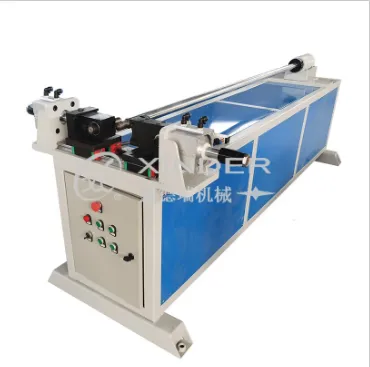-
 8613931787312
8613931787312 -
 Botou Industrial Zone on the east side of National Highway 104, Botou City, Hebei Province
Botou Industrial Zone on the east side of National Highway 104, Botou City, Hebei Province
- Afrikaans
- Albanian
- Amharic
- Arabic
- Armenian
- Azerbaijani
- Basque
- Belarusian
- Bengali
- Bosnian
- Bulgarian
- Catalan
- Cebuano
- Corsican
- Croatian
- Czech
- Danish
- Dutch
- English
- Esperanto
- Estonian
- Finnish
- French
- Frisian
- Galician
- Georgian
- German
- Greek
- Gujarati
- haitian_creole
- hausa
- hawaiian
- Hebrew
- Hindi
- Miao
- Hungarian
- Icelandic
- igbo
- Indonesian
- irish
- Italian
- Japanese
- Javanese
- Kannada
- kazakh
- Khmer
- Rwandese
- Korean
- Kurdish
- Kyrgyz
- Lao
- Latin
- Latvian
- Lithuanian
- Luxembourgish
- Macedonian
- Malgashi
- Malay
- Malayalam
- Maltese
- Maori
- Marathi
- Mongolian
- Myanmar
- Nepali
- Norwegian
- Norwegian
- Occitan
- Pashto
- Persian
- Polish
- Portuguese
- Punjabi
- Romanian
- Russian
- Samoan
- scottish-gaelic
- Serbian
- Sesotho
- Shona
- Sindhi
- Sinhala
- Slovak
- Slovenian
- Somali
- Spanish
- Sundanese
- Swahili
- Swedish
- Tagalog
- Tajik
- Tamil
- Tatar
- Telugu
- Thai
- Turkish
- Turkmen
- Ukrainian
- Urdu
- Uighur
- Uzbek
- Vietnamese
- Welsh
- Bantu
- Yiddish
- Yoruba
- Zulu
Automatic & Semi-Automatic Bending Machines High-Speed Precision Solutions
- Introduction to Automatic Bending Machines
- Market Data and Industry Impact
- Technical Superiority in Modern Manufacturing
- Competitive Analysis of Leading Manufacturers
- Custom Solutions for Diverse Applications
- Real-World Implementation Case Studies
- Future Prospects of Bending Machine Automation

(bending machine automatic)
Understanding the Power of Bending Machine Automatic Technology
Automatic bending machines have revolutionized metal fabrication by integrating precision engineering with advanced software controls. These systems enable manufacturers to achieve tolerances as tight as ±0.1mm, significantly reducing material waste. The latest models combine hydraulic power with servo-electric actuators, delivering 30% faster cycle times compared to traditional press brakes while maintaining energy efficiency.
Market Growth and Operational Statistics
The global sheet metal processing market, valued at $12.3 billion in 2023, shows a 6.8% CAGR with automation driving 42% of recent sector growth. Semi-automatic models account for 58% of installations in SMEs due to their balance between upfront cost ($45,000-$75,000) and productivity gains. Fully automatic systems demonstrate 92% operational uptime in automotive production lines, outperforming manual alternatives by 37%.
Engineering Advancements in Bending Systems
Third-generation CNC controllers now feature real-time angle correction and collision prevention algorithms. Multi-axis configurations support complex geometries with bend sequences completed in under 8 seconds. Adaptive tooling systems permit automatic die changes within 90 seconds, enabling rapid transition between 2mm aluminum sheets and 12mm stainless steel plates without manual intervention.
| Manufacturer | Model | Automation Level | Max Tonnage | Positioning Accuracy | Price Range |
|---|---|---|---|---|---|
| TechnoBend Pro | AX-7S | Full | 220T | ±0.05° | $148,000 |
| PressMaster | HC-4X | Semi | 160T | ±0.12° | $82,500 |
| AutoForm | iBend 3000 | Full | 350T | ±0.03° | $214,000 |
Application-Specific Configuration Options
Modular designs allow integration of specialized features: laser-guided alignment systems for aerospace components (±0.02mm repeatability), anti-vibration mounts for construction equipment production, and high-speed tool changers for electronics manufacturing. Custom software packages support JIT production with batch changeovers completed in under 4 minutes.
Success Stories Across Industries
A German automotive supplier reduced panel production time by 41% using semi-automatic sheet bending machines with adaptive learning systems. An aerospace contractor achieved 99.3% defect-free rates on titanium components through automated angle monitoring. Energy sector manufacturers report 22-month ROI on automatic systems through 24/7 operation capabilities.
Why Bending Machine Automatic Solutions Are the Future
With 78% of fabricators prioritizing automation investments by 2025, bending machine automatic
systems stand at the forefront of smart manufacturing. The integration of IoT diagnostics and predictive maintenance algorithms promises to reduce downtime by additional 15-20%, while evolving AI-powered programming interfaces are making complex bending sequences accessible to operators with 35% less training time.

(bending machine automatic)
FAQS on bending machine automatic
Q: What are the key features of a fully automatic bending machine?
A: Fully automatic bending machines offer precision control, programmable settings, and high-speed operation. They minimize manual intervention and are ideal for complex, repeatable tasks in industrial manufacturing.
Q: How does a semi-automatic bending machine differ from a fully automatic one?
A: Semi-automatic bending machines require partial manual input for loading/unloading materials, while bending operations are mechanized. They balance cost and efficiency for medium-scale production.
Q: What industries benefit most from semi-automatic sheet bending machines?
A: Industries like HVAC, automotive, and metal fabrication benefit from their versatility. They handle mid-volume sheet metal bending with consistent accuracy and reduced labor costs.
Q: Can automatic bending machines reduce production time?
A: Yes, automatic bending machines optimize cycle times through CNC programming and rapid tooling changes. This significantly boosts throughput for large batches.
Q: What factors should I consider when choosing between automatic and semi-automatic bending machines?
A: Evaluate production volume, budget, and complexity. Fully automatic suits high-volume precision tasks, while semi-automatic is cost-effective for smaller or variable batches.
-
The Rise of Laser Welding: Precision Meets Power in Modern MetalworkNewsAug.06,2025
-
Streamlining Industrial Packaging: The Power of Barrel Production LinesNewsAug.06,2025
-
Revolutionizing Metal Joining: The Power of Automatic Seam Welding MachinesNewsAug.06,2025
-
Powering Industrial Innovation: The Role of Pipe and Tube Machinery in Modern ManufacturingNewsAug.06,2025
-
Exploring the World of Resistance Welding: Equipment, Manufacturers, and Pricing InsightsNewsAug.06,2025
-
Advancing Container Manufacturing: The Role of the Modern Can Welding MachineNewsAug.06,2025
-
Understanding Automatic Seam Welding Machines: A Game Changer in Welding TechnologyNewsJul.18,2025
-
 Pneumatic Handle Welding MachineSep . 13, 2024
Pneumatic Handle Welding MachineSep . 13, 2024 -
 Fully Automatic Kaiping Production LineOct . 17, 2024
Fully Automatic Kaiping Production LineOct . 17, 2024 -
 Fully Automatic Metal Bucket Lifting HeadphonesSep . 14, 2024
Fully Automatic Metal Bucket Lifting HeadphonesSep . 14, 2024

